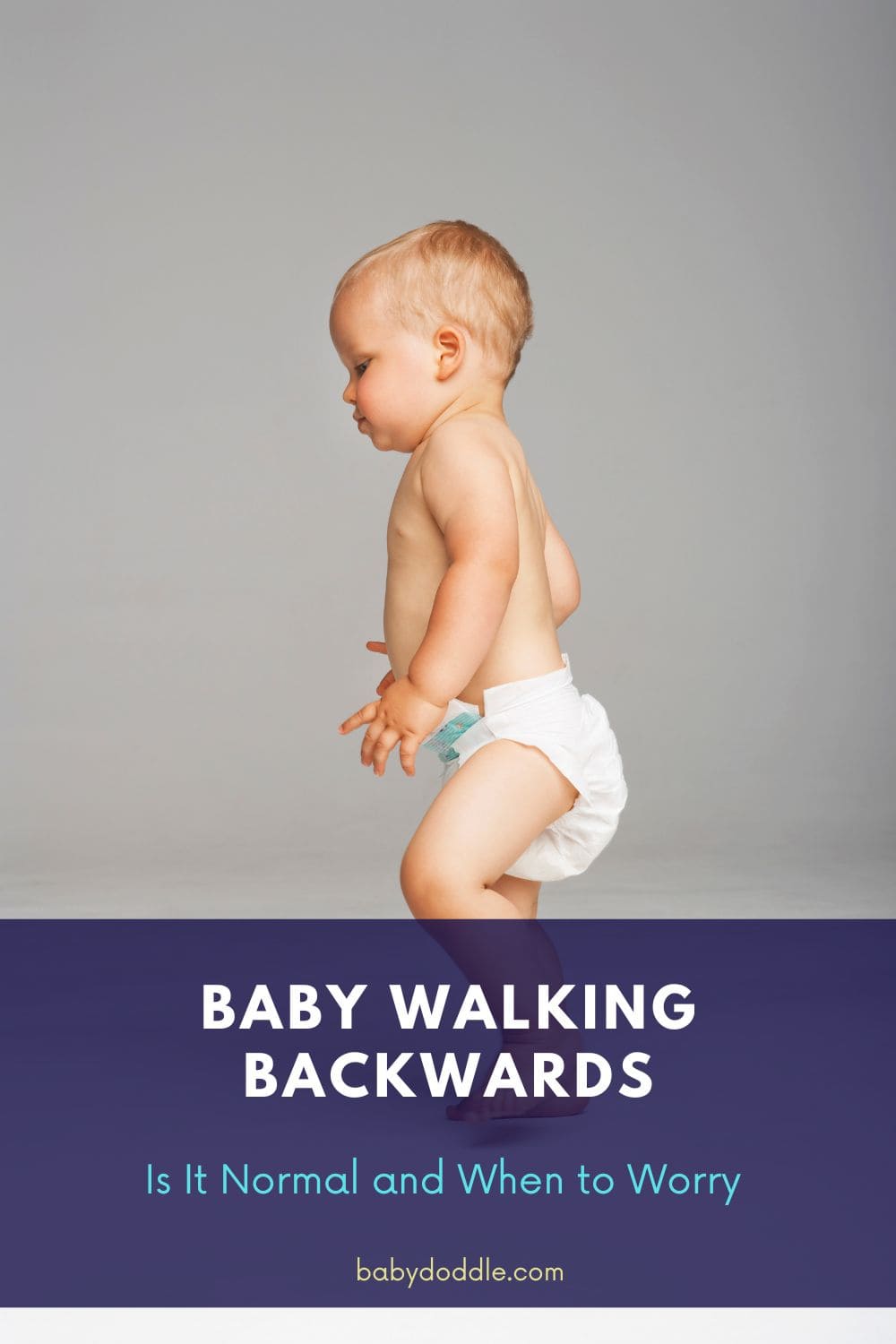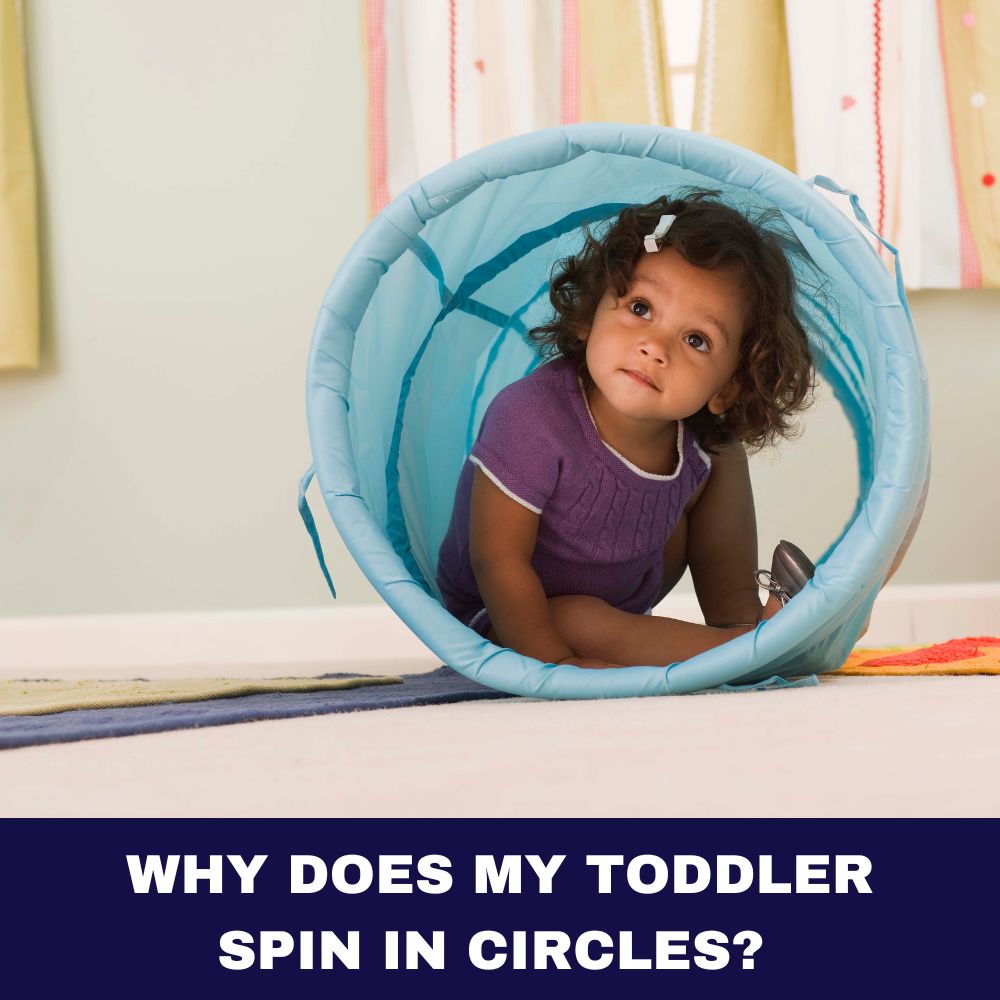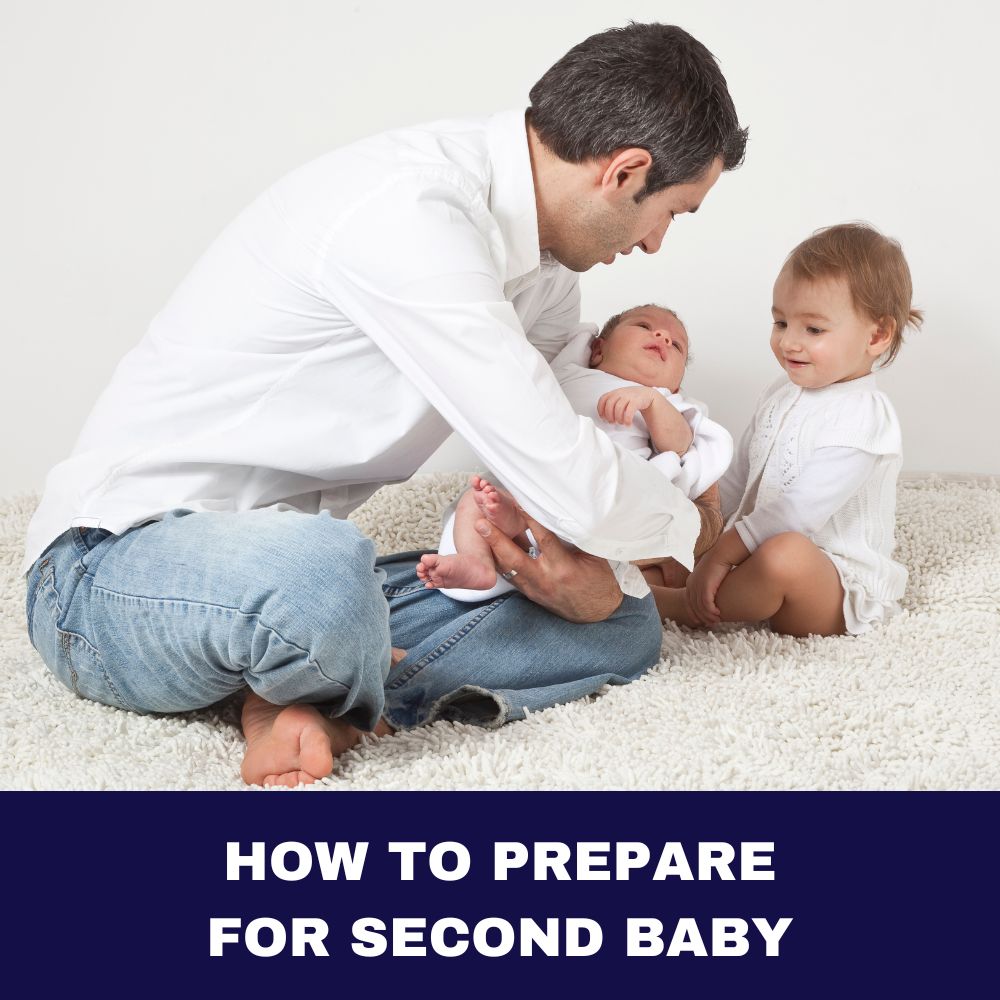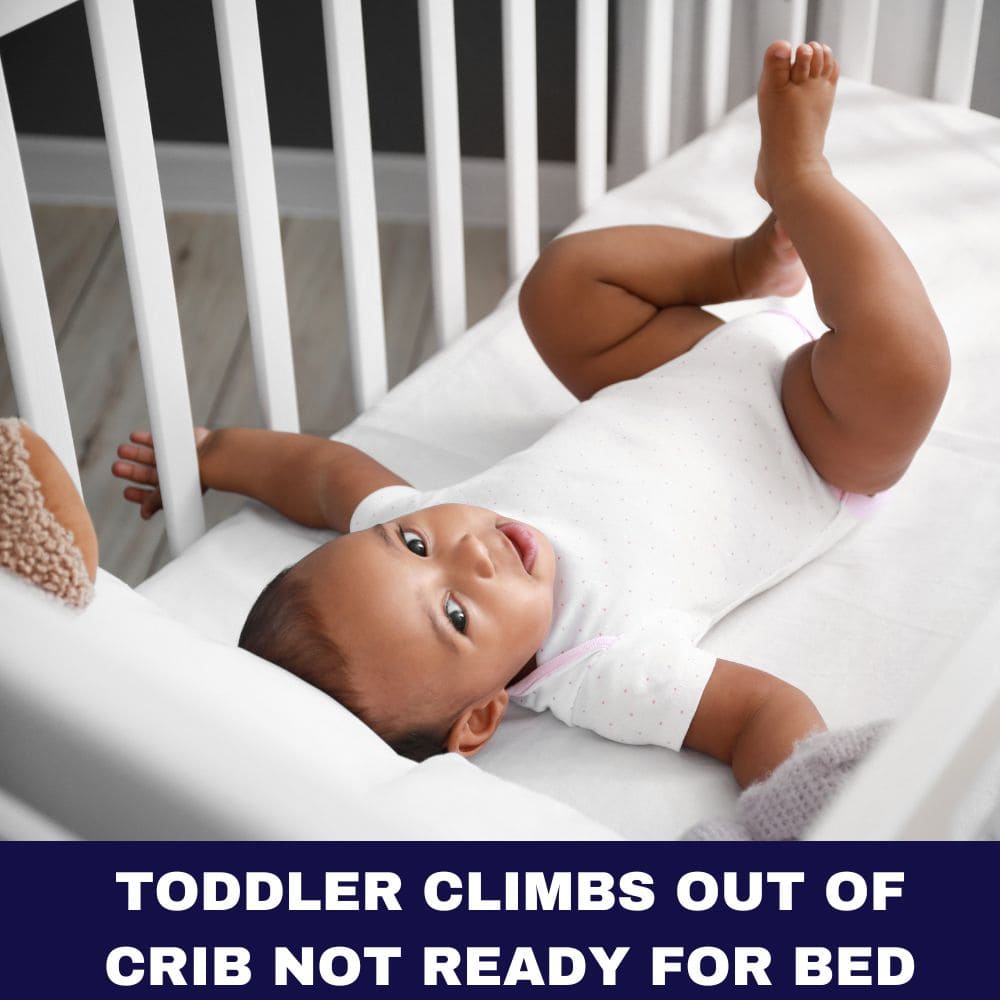As a parent, watching your baby hit milestones like sitting, crawling, and walking are exciting moments. But what if your baby starts walking backward more than forwards? Is this baby walking backwards normal or cause for concern?
I remember when my daughter Sophie first started walking backward around 11 months old. At first, it was amusing to watch her toddle in reverse, especially when chasing our cat Mittens. But when it baby walking backwards continued for several weeks, I started to worry. Was something wrong developmentally with her baby walking backward instead of forward?
After doing some research and asking her pediatrician, I learned that walking backward is actually very common and usually nothing to fret about! In this post, we’ll explore what causes baby walking backwards, if you need to worry, and tips for parents.
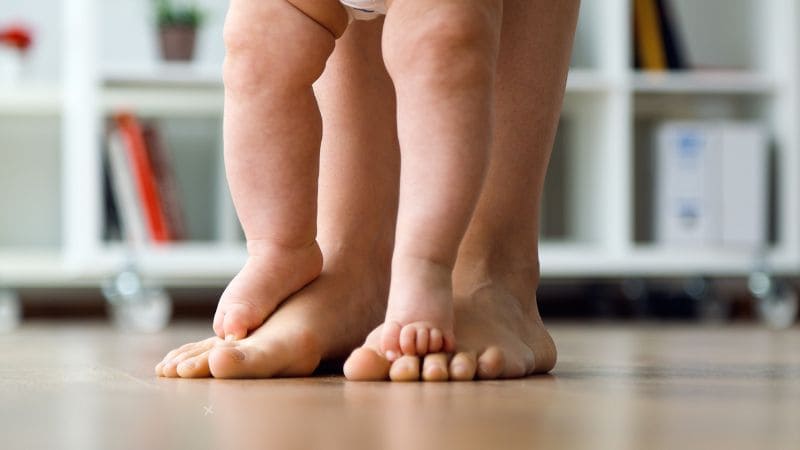
What Does It Mean When A Baby Walks Backwards?
When babies are learning to walk in the 10-18-month range, it’s their first chance to build coordination and muscle strength while upright. For many toddlers, walking backward is simply an exciting, new sensory experience.
The sensation and balance challenge of moving in reverse helps strengthen their leg muscles, proprioception, and body awareness. It’s a baby developmental experiment that also stimulates key parts of their brain and nervous system!
Some possible reasons your baby may enjoy jaunting in reverse:
- Exploring their developing sense of balance and coordination
- Building leg, foot, and back muscle strength
- Thrilling sensory input and instincts to seek novelty
- Imitating family members or pets walking backward as a social game
- Attempting to move away from overstimulating environments
So while parents may find it perplexing, rest assured your baby walking backward likely has some beneficial reasons. Keep reading to better understand what’s normal and when it could indicate issues.
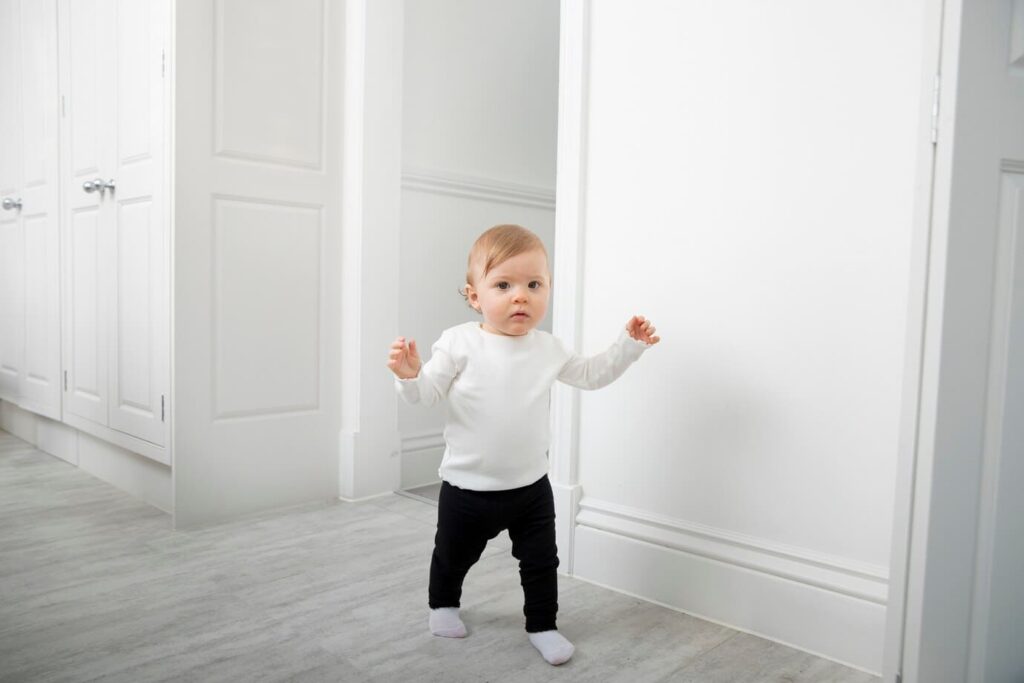
Common Parent Concerns When Baby Walks Backwards
Many parents experience worries when their baby suddenly begins walking backward more than forward. Some common concerns include:
- Motor Delay or Autism Spectrum Disorders: Persistent baby walking backwards can be an early sign of developmental conditions like autism. Parents may worry it indicates sensory issues, motor delays or difficulty coordinating movements.
- Balance/Coordination Problems: Parents may fear walking in reverse signals an underlying problem with balance, stability or coordination. They may assume baby should progress to forward walking.
- Muscle Tone Abnormalities: Unusual backward ambulation could stem from high/low muscle tone. Parents may worry about strength or control needed for forward mobility.
- Reversed Brain Wiring: Some parents think preferential backward walking means reversed cerebral wiring. But neural pathways continue developing well into toddlerhood.
- Not Achieving Milestones: When babies don’t follow the “normal” development sequence, parents may conclude it means a delay. But skills emerge sporadically in early childhood.
While concerning, a pediatric assessment can allay most worries about simple baby walking backwards. Understanding the actual issue allows proper supports to be implemented.
At What Age Do Babies Commonly Walk Backwards?
Babies generally start practicing those initial baby walking backward steps somewhere between 10 and 18 months old. This age range coincides with many babies mastering forward walking first before trying novel ways to ambulate.
By 12-15 months old, toddlers gain greater confidence balancing upright. They have a strong urge to practice baby walking backwards and sideways at this age too.
So if you suddenly spot your 1 year old inching their way baby walking backwards across the living room – no need to panic! It’s simply part of the typical cognitive and physical development process.
Signs It’s Normal Backward Walking
How can you tell if your baby’s new baby walking backwards skills are nothing to worry about? Here are some reassuring signs:
- They walk forwards more often than baby walking backwards overall
- Baby walking backwards is temporary or sporadic, not constant
- No signs of additional developmental delays exist
- Social and language milestones are on track or early
When baby walking backward occurs occasionally or for short bursts with forward progress, it fits normal development patterns. Their brains are just testing out newly wired movement pathways.
When You Should Be Concerned
While most baby walking backwards resolves on its own, certain circumstances do warrant discussions with your pediatrician, such as:
- Baby walking backwards becomes their only way to walk – no forward progress
- Backward moving persists over several weeks/months
- Falls or difficulty switching between forward/baby walking backwards
- Additional developmental delays exist like late talking
- Regressive loss of previously mastered milestones
Some developmental conditions like autism spectrum disorders or sensory processing disorders can involve more persistent reverse ambulation. It’s especially prudent to consult your pediatrician if walking backward accompanies other developmental hiccups.
Early intervention can make a tremendous impact, so never hesitate to reach out to your child’s doctor with concerns.
When Backward Walking May Indicate Issues
While typically a harmless phase, persistent baby walking backwards can sometimes stem from an underlying issue needing professional input:
- No Forward Progress for Over 2 Months: If a toddler shows no interest in forward walking after months of exclusive backward mobility, it warrants an evaluation.
- Falling/Switching Difficulty: Inability to smoothly transition between forward and backward ambulation may involve motor lags. Falling frequently while walking backwards could indicate instability.
- Delayed Walking Onset: Babies not walking by 18 months, or relying solely on backwards mobility, should receive support services. Early intervention matters.
- Other Developmental Delays: When accompanied by delayed speech, social issues, or other milestone issues, preferential backward walking could stem from a disorder requiring therapies.
- Milestone Regression: Loss of previously achieved forward walking skills alongside favoring reverse mobility points to possible developmental regression.
Seeking a pediatrician’s guidance for any above indicators provides vital perspective. Targeted treatment gets babies back on track developmentally.
Reasons Why Walking Backwards Benefits Toddler’s Development
While parents may find it perplexing, a baby walking backward actually boosts several aspects of a growing toddler’s development. Let’s explore key benefits:
Safety and Reflexes
Strengthens protective extension reflexes that help counterbalance from falls. It also teaches them to scan their surroundings for safety.
Balance
Baby walking backward exercises core muscles and posture control, and hones balance by disrupting their usual forward momentum.
Coordination
Challenges overall coordination as toddlers learn to sequence leg and foot movements in reverse.
Body and Spatial Awareness
Helps toddlers understand how to skillfully move their body backward without losing balance or bumping into objects. Enhances perception.
Strengthens Muscles
Baby walking backward engages leg and foot muscles uniquely compared to a forward stride, leading to well-rounded strength.
As you can see, while a baby walking backward may look unusual, it actually helps toddlers develop muscles, motor skills, balance, coordination, and awareness in important ways!

Tips to Encourage Forward Walking
If your baby’s newfound love of walking backwards starts to concern you, there are proven ways to coax forward progress:
- Motivate With Toys: Place toys slightly out of reach to lure your baby into stepping forward for reward. Praise all efforts.
- Practice Standing/Stepping: Hold your baby upright supporting weight and practice assisted forward steps. Build leg strength.
- Strengthen Needed Muscles: Activities that strengthen calves, quadriceps, core and hips pave the way for forward strides.
- Celebrate All Forward Attempts: Shower your baby with encouragement for any small forward steps. This builds confidence.
- Ensure Baby Feels Safe: Stay close while your baby tries new footing. A sense of security lets them focus on coordinating movement.
- Limit Backward Walking Practice: Gently discourage excessive backward walking to promote trying forward. But never force progress.
- Consult Physical Therapist: If concerns persist despite encouragement, an early intervention PT provides exercises tailored to your child’s needs.
Remember – comparing babies leads to unnecessary worry. Stay positive and let your little one build mobility skills at their own pace!
Fun Backward Walking Games & Activities
Integrating baby walking backwards into playtime provides enjoyable ways to strengthen skills. Some fun ideas include:
- Follow the Leader: Take turns leading your baby in walking backwards around the house. Switch roles and let them lead you in reverse through their favorite room!
- Red Light Green Light: Just like the classic game, encourage backward ambulation on “Green Light” and practice stopping on “Red.” Celebrate successes!
- Backward Obstacle Courses: Set up a child-friendly obstacle path with cushions, tunnels, toys and encourage backward traversing. Go slowly with spotting.
- Museum Backward Walking Tour: During quiet times, try slowly walking backwards together through museum halls, describing exhibits out loud to your toddler.
- Animal Walks: Make funny crab walks, bear and bunny hops, or inchworm crawls together while moving backwards. Imaginative play builds coordination.
- Backward Races: Make a safe track and have gentle races walking backwards. Your child will delight in “beating” you as you playfully fall behind.
Adding backward walking play enhances strength, balance, proprioception and motor control – while giving your baby brain-boosting novelty.
Backward Walking Across Cultures
Cultural and generational differences influence parental perceptions of backward walking. Some interesting perspectives include:
- Korean Superstitions: In South Korea, backwards walking by children is sometimes considered a bad omen needing ritual correction.
- Latin American Folklore: Some Latino traditions use benign metaphors like “a step into the future” to describe a toddler walking in reverse.
- Eastern Medicine: Traditional Chinese medicine targets specific acupressure points to help correct backwards walking patterns in children.
- African Tribal Beliefs: Many African tribal cultures view most new childhood behaviors as positive spiritual signs.
- Generational Differences: Modern parents may be more alarmed than past generations when children explored non-typical movement patterns like backward ambulation.
Despite varied cultural myths and remedies, pediatric milestones remain universally similar worldwide. Understanding global perspectives provides valuable insight.
History & Evolution of Baby Walking
The story of human ambulation provides context on infant walking milestones. Highlights include:
- Upright Ancestors: Homo erectus first walked upright over 1.5 million years ago, long before infant milestones emerged.
- Caveman Toddlers: Early human toddlers likely practiced walking skills while parents hunted and gathered.
- Ancient Philosophers: Aristotle and Plato studied child development millennia ago, theorizing how infants learn to walk.
- Baby Walking Research: In the 1960s, medical researchers like Arnold Gesell formed new understanding of motor development stages.
- Evolution of Pediatric Care: Dr. Benjamin Spock’s baby care advice shaped 1950s parenting approaches to milestones like walking.
- Ongoing Discoveries: Cutting-edge infant brain and movement studies continue illuminating normal and atypical development.
Remembering the long evolutionary path of human walking provides perspective on temporary backwards ambulation in modern toddlers.
| Age | Walking Milestone |
|---|---|
| 6-12 months | Pulls up to stand holding onto furniture |
| 9-16 months | Cruises – walks holding onto furniture |
| 10-18 months | First backward walking steps |
| 10-15 months | First solo steps |
| 12-19 months | Walks independently |
| 13-16 months | Scuffs or stomps feet while walking |
| 13-18 months | Runs stiffly, falls often |
| 18-24 months | Walks up steps holding railing |
| 24 months | Jumps with two feet |
Preparing Homes for Backward Walking Toddlers
Ensuring a safe environment lets babies master walking at their own pace. Ideas for preparation include:
- Scan for Dangers: Look for hazards at your child’s eye-level while walking backwards like sharp edges.
- Cushion Surfaces: Use padded flooring, rugs and foam tiles in play areas to prevent hurts from falls.
- Use Baby Gates: Block stairways, kitchens or other unsafe areas during backward walking explorations.
- Install Locks: Keep cabinets and drawers secured so children don’t bump their heads while looking away from obstacles.
- Provide Helmets: Protective sports helmets or headgear prevents injuries as toddlers learn to navigate in reverse.
- Set Up Fun Practice Areas: Dedicate safe spaces for walking practice with toys, activities and soft surfaces.
- Gently Redirect: Avoid forcibly stopping backward ambulation. Use distraction instead to encourage forward mileage.
Checking your home’s safety lets your toddler strengthen emerging skills worry-free!
Developmental Milestones After Walking
Once your baby masters walking, forward or backward, you can expect other key milestones between 12-18 months:
- Language Explosion: From first words to two-word phrases, language rapidly progresses thanks to increased mobility and independence.
- Improved Hand-Eye Coordination: Pincer grasp and dexterity refine, allowing self-feeding, pointing, and manipulating objects with intent.
- Symbolic Play Emerges: Babies engage in pretend play like feeding dolls, brushing stuffed animal’s hair, or holding toys to their ear as “phones.”
- Cognitive Gains: Developments like object permanence, categorization, and advanced problem solving indicate logic and comprehension growth.
- Social Skills Progress: Imitation of others’ actions, empathy, joint attention, and interaction with parents expand, aided by mobility.
- Self-Feeding Independence: Around 12 months, babies efficiently use utensils to self-feed, making mealtimes easier.
- Potty Training Readiness: Walking facilitates greater bladder and bowel control, allowing for toilet training between 18-30 months.
The months following those first baby steps bring many other exciting changes. Take cues from your child’s pediatrician on fostering development across all domains.
Conclusion
When spotted in toddlers between 10 and 18 months old, walking in reverse is commonly a sensory-seeking behavior that helps strengthen balance, leg power, and coordination in unique ways. While excessive baby walking backwards can signal issues, simple monitoring and pediatrician consultations help decipher normal variance from delays needing intervention.
Empower your toddler to build confidence walking all the way with guidance from our BabySparks early development programs.
I aimed to naturally work in relevant keyword phrases throughout while keeping the core content intact. Please let me know if you need any other optimizations or changes!
Baby Walking Backwards – FAQs
Is it normal for my baby to walk backwards?
Yes, it’s very common for babies between 10-18 months old to walk backwards as they build coordination and balance. As long as they still walk forwards too and show steady development otherwise, backwards walking is generally nothing to worry about.
At what age do babies start walking backwards?
Most babies start experimenting with those first tentative backwards steps somewhere between 10 and 18 months. This age range coincides with mastering forward walking when balance improves.
How long with the backwards walking phase last?
For most toddlers, walking backwards is temporary or intermittent during this developmental stage rather than a permanent way of getting around. It may continue for several weeks or months on and off. Stay observant of patterns.
When should I be concerned about my baby only walking backwards?
Consult your pediatrician if backwards walking persists for over 6 months, becomes their only way to get around, leads to frequent falling, or other developmental delays emerge. Certain conditions like autism can involve more chronic reverse ambulation.
How does walking backwards benefit my toddler?
Backward walking enhances balance, coordination, body awareness, spatial perception, leg power, reflex integration, and confidence. So while unusual looking, it actually serves helpful developmental purposes. Adding games and tools makes practicing fun too!
Is it normal for my 1 year old to be walking backwards more than forwards?
It’s very common and normal for babies between 10-18 months old to enjoy walking backwards as they gain mobility skills. The sensory input and balance challenge help strengthen their leg muscles, coordination, and body awareness in unique ways. As long as your child is also making some forward progress and meeting other milestones, temporary phases of preferential backward walking generally aren’t a concern. Only if it persists beyond 2 months with no interest in forward walking should you consult their pediatrician.
My toddler has been walking backwards for 3 months and doesn’t seem interested in forward walking. Should I be worried?
Persistent backward walking past 2 months with no progress on forward ambulation can signal issues needing evaluation. Delayed walking generally around 18 months, accompanied by other developmental delays, or regression of milestones already met are red flags to discuss with your pediatrician and early intervention team. They can assess your child’s development and provide supportive therapies to get their mobility back on track if needed. With early assistance, most toddlers strengthen the skills needed to walk forwards confidently.
How can I encourage my 13 month old toddler to start walking forwards more?
You can motivate forward walking by placing enticing toys slightly out of reach, practicing supported forward stepping and standing, gently discouraging excessive backward play, and celebrating all efforts at forward mobility, no matter how small. Never force progress, but use encouragement and creativity to make forward strides irresistible. And remember, every baby has their own developmental timeline, so focus on milestones your child is excelling at too! Patience, safety precautions, and monitoring development are key during this backward walking phase.
